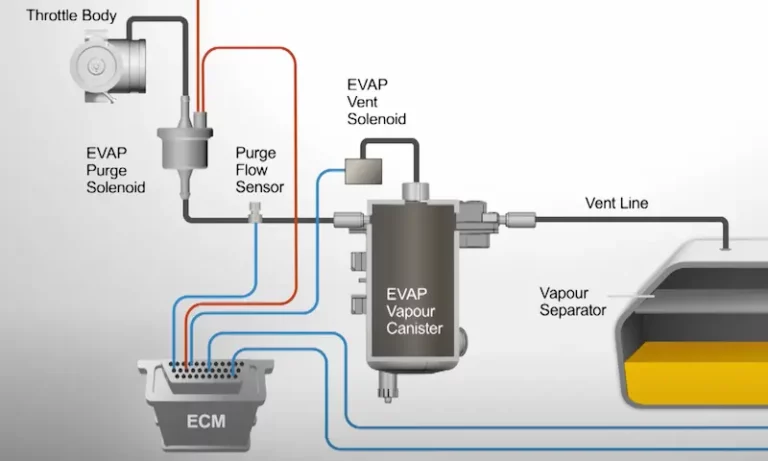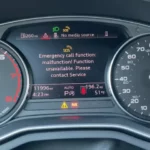Looking to free up some engine bay space or shed a few pounds from your ride? You might’ve heard about EVAP delete as a potential modification. It’s a controversial change that some performance enthusiasts swear by—but there’s more to the story than just gaining a bit of extra room under the hood.
What Is an EVAP System and Why Would Anyone Remove It?
Your car’s Evaporative Emission Control (EVAP) system prevents fuel vapors from escaping into the atmosphere. It uses a charcoal canister, purge valves, and a network of hoses to capture these vapors and redirect them to your engine for combustion.
The system has been standard equipment since the 1970s when the Clean Air Act amendments made them mandatory. While it does an important environmental job, it adds complexity to your engine bay—which is why some car enthusiasts consider removing it.
Weight Reduction: Is It Really Significant?
One of the primary claims about EVAP deletion benefits is weight savings. The reality? You’ll typically shed between 4-7 pounds depending on your vehicle model.
For daily drivers, this weight reduction is practically unnoticeable. However, for track enthusiasts where every pound counts, even this modest weight savings follows the motorsport philosophy of incremental improvements.
Here’s what you might expect to remove:
| Component | Approximate Weight |
|---|---|
| Charcoal canister | 3-5 lbs |
| Solenoid valves | 0.5-1 lb |
| Hoses and connectors | 0.5-1 lb |
| Total potential reduction | 4-7 lbs |
As one Corvette owner put it: “Taking out the EVAP system saved me about 7 pounds. Not much for street driving, but on track day, I’ll take every advantage I can get.”
Engine Bay Simplification: Creating Breathing Room
Many enthusiasts appreciate the cleaner look and improved access after removing EVAP components. The system takes up valuable real estate with its bulky canister and maze of vacuum lines.
Removing these components can:
- Make maintenance easier by improving access to other parts
- Create space for aftermarket components
- Simplify troubleshooting vacuum-related issues
- Give a cleaner, more minimalist engine bay appearance
This benefit becomes particularly valuable if you’re working on custom builds like single-turbo conversions or engine swaps where space optimization matters.
Performance Effects: Separating Myth from Reality
Let’s clear something up: EVAP deletion doesn’t directly increase horsepower. The system isn’t actively involved in your engine’s power production during normal driving.
However, there are some potential performance-adjacent benefits:
Eliminating Potential Vacuum Leaks
A failing EVAP system can introduce vacuum leaks that disrupt your air-fuel ratio and trigger check engine lights. Some GMT400 truck owners have reported that removing a faulty system eliminated stuttering under light throttle.
Improved Reliability Through Simplification
Fewer components mean fewer potential failure points. This is particularly relevant for older vehicles where aging EVAP components might be deteriorating and causing intermittent issues.
One BMW E36 owner noted: “After removing the EVAP system, my idle became noticeably smoother—turned out the purge valve had been leaking for who knows how long.”
Tuning Requirements and ECU Considerations
Don’t expect to simply rip out EVAP components without consequences. Your car’s computer expects these systems to be present and functioning.
Here’s what to expect:
- The check engine light will likely illuminate
- You may receive specific error codes (P0440–P0457)
- Your vehicle might fail emissions readiness tests
To properly implement an EVAP delete, you’ll need to either:
- Install resistors to simulate sensor feedback
- Have your ECU reprogrammed to ignore EVAP-related faults
This isn’t a DIY job unless you have experience with automotive electronics and tuning.
The Legal Reality Check: Know Before You Delete
Here’s the blunt truth: EVAP system deletion is illegal in many areas, particularly in regions with emissions testing.
The specific consequences vary by location:
- In California and states following CARB standards, tampering with emissions equipment violates federal law
- Even in areas without regular testing, the modification could:
- Void your vehicle warranty
- Create issues during resale
- Result in fines if discovered during inspection
According to the EPA and NHTSA, tampering with emissions equipment is prohibited under the Clean Air Act, with potential fines reaching thousands of dollars.
Environmental Impact: The Bigger Picture
Your EVAP system reduces hydrocarbon emissions by up to 95%. When you delete it, those fuel vapors escape into the atmosphere instead of being captured and burned.
These hydrocarbons contribute to:
- Ground-level ozone formation
- Smog development
- Air quality degradation
- Potential respiratory health issues
While one vehicle’s impact might seem small, the collective effect of widespread deletion would undo decades of air quality improvements. This is why environmental regulations exist in the first place.
Practical Problems: The Drawbacks Most Guides Don’t Mention
The Smell Factor
Without the EVAP system’s charcoal filtration, fuel vapors escape freely. This often results in a persistent gasoline smell, especially:
- During hot weather
- After refueling
- When parked in enclosed spaces like garages
Many owners who have performed the modification report this unexpected downside, which can be particularly unpleasant during long drives.
Fuel Tank Pressure Issues
Your EVAP system manages pressure in the fuel tank. Without it, you might experience:
- Difficulty refueling (the pump may shut off repeatedly)
- Pressure build-up on hot days
- Potential fuel seepage from caps or fittings
- Vapor lock in extreme conditions
Properly capping or rerouting vent lines becomes essential to prevent these issues, adding complexity to what seemed like a straightforward modification.
Cost vs. Benefit Analysis: Is It Worth It?
Let’s weigh the practical benefits against the drawbacks:
| Benefits | Drawbacks |
|---|---|
| 4-7 lbs weight reduction | Illegal in many areas |
| Cleaner engine bay | Check engine light/error codes |
| Elimination of potential vacuum leaks | Increased emissions |
| Simplified troubleshooting | Fuel odor issues |
| Space for modifications | Potential refueling problems |
| May fail emissions testing | |
| Possible warranty issues |
For most daily drivers, the drawbacks clearly outweigh the benefits. The modification makes most sense for:
- Dedicated track/race cars never driven on public roads
- Vehicles in areas with no emissions testing
- Older models with failing EVAP systems that are expensive to repair
Alternative Approaches to Consider
If EVAP issues are your concern, consider these alternatives:
Repair Rather Than Remove
Fixing a faulty EVAP system might cost less than you think, especially compared to professional tuning required for proper deletion.
Relocate Instead of Remove
Some enthusiasts choose to relocate the EVAP components to a less intrusive spot rather than removing them entirely, maintaining legal compliance while freeing up engine bay space.
Upgrade to Modern Components
Newer EVAP components are often more compact and reliable than older designs. Upgrading rather than removing can solve many issues while keeping your vehicle legal.
Making an Informed Decision
If you’re still considering an EVAP delete after weighing all factors, here’s a checklist before proceeding:
- Check local and state regulations regarding emissions equipment
- Research your specific vehicle model for known issues
- Consider the impact on vehicle resale value
- Factor in the cost of proper tuning to prevent error codes
- Think about how the vehicle will be used (track vs. street)
Remember that for street-driven vehicles, the modest benefits rarely outweigh the legal, environmental, and practical drawbacks. If performance is your goal, there are usually more effective modifications that don’t involve removing emissions equipment.
The choice is ultimately yours, but now you can make it with a complete understanding of what EVAP deletion really means for your vehicle.
















